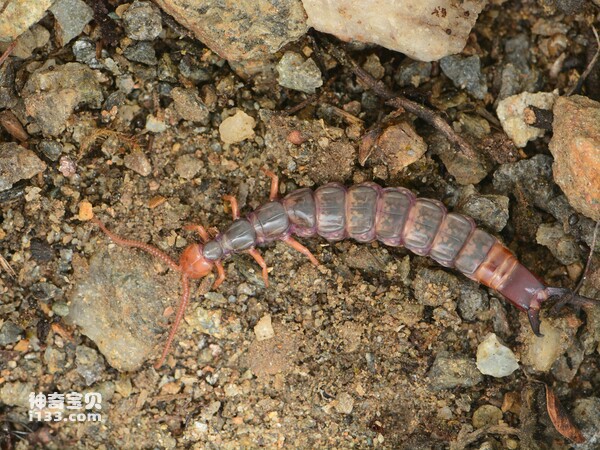Maja japonica
IUCN
LCBasic Information
Scientific classification
- name:Maja japonica
- Scientific Name:Japanese spider crab, giant crab, giant spider crab, Gan's giant crab, Gan's giant crab, tall crab
- Outline:Arthropoda
- Family:Decapoda Pleocyemata Brachyura Majidae
Vital signs
- length:3m
- Weight:16-20kg
- lifetime:50-100year
Feature
The world's largest crustacean looks a lot like a giant venomous spider
Distribution and Habitat
The Japanese spider crab is found along the Pacific coast of Japan at depths of 50-300 meters. It is mostly confined to the Japanese archipelago, usually between 30 and 40 degrees north latitude. It is most commonly found in Sagami, Suruga and Tosa Bays, and the coast of the Kii Peninsula. It has been found as far south as the Russian Far East and Australia, and east of Taiwan. This is because trawlers or extreme weather have allowed people to expand their range further south.
The Japanese spider crab most often inhabits the sandy and rocky bottoms of the continental shelves and slopes, with an average depth of 150-300 meters, and generally moves around 180 meters deep. During the spawning season, the crabs spend most of their time in shallow waters, around 50 meters. In Suruga Bay, they live at a depth of 300 meters, with temperatures around 10 degrees Celsius. Young crabs mostly live in shallower areas when the temperature rises.
Appearance
The Japanese spider crab weighs 16 to 20 kilograms, has an average length of 3 meters, and can span up to 4.2 meters when its claws are open. It has an extremely sensitive sensory organ that can distinguish moving objects on the sea surface, and this crab is extremely flexible and agile in the water. The body of the giant crab is spindle-shaped, with pointed ends. The 10 claws are long and sharp, especially the pair of claws that are like steel pincers, which are very strong and powerful. When all claws are spread out, they can cover a range of 3 meters in diameter.
The Japanese spider crab belongs to the Brachyura order. Although it is also called a crab, it is different from the true crabs in the Brachyura order. The body of this crab is divided into the cephalothorax and the abdomen. The back of the cephalothorax is covered with a cephalothorax, with the first and second pairs of antennae in the center of the forehead, and stalked compound eyes on the outside. The mouthparts incl
Details
The Japanese spider crab is the largest crab in the world, and also the largest crustacean and arthropod in the world. It is a strange creature living in the southeastern coastal waters of Japan, and is also the prototype of the so-called "killer crab" in domestic rumors. This largest known crustacean in the world lives at the bottom of the deep sea. Since it has no swimming limbs and air chambers or air sacs, the Japanese spider crab has no ability to swim or float, and can only crawl at a slow speed on the seabed to find food. So how does it "kill"?

In fact, the "Gan's giant crab kills people" originated from a translation error. Like many crabs, the giant crab (Japanese spider crab alias) has the habit of eating scavengers, often picking up the carrion of various animals on the seabed, so it has a common name in English as "Dead Man Crab". However, when "Dead Man Crab" was introduced to China, it was mistakenly translated as "murder crab", and then some fictitious stories were derived, which made the giant crab unreasonably bear the "crime" of murder. In fact, the giant crab is not only unable to kill people, but is often captured by local fishermen in the Japanese waters where it is mainly distributed, becoming human food or "prisoners" in aquariums.
Japanese spider crabs cannot change their body color, but their mottled, uneven carapace makes them blend in well with the seabed environment. They belong to the "decorator crab" family - they cover the surface of their carapace with algae, sponges, etc. as camouflage.
Although the walking legs of Japanese spider crabs are long, they are fragile and easily broken. It is reported that spider crabs can still survive after losing three walking legs. Sometimes, broken walking legs can be restored during molting. The ends of their walking legs are bent inward, which can help them climb and hook rocks flexibly, but cannot be used to grab objects.
Despite their seemingly ferocious appearance, Japanese spider crabs are gentle in nature. Their antennae are degenerate and their eye stalks are short and thick. They are not active predators, and they don't have many predators, so their sensory systems are relatively dull.
According to scientists, the lifespan of Japanese spider crabs can reach 50-100 years, the longest among crabs.
It is "not evaluated" in the Red List of the World Conservation Union (IUCN).
In Japan, the early spring from January to March is the mating season for spider crabs. In order to ensure the reproduction of the species, fishermen are prohibited by law from catching spider crabs. The number of Japanese spider crabs has dropped significantly in the past 40 years, and experts hope to restore the population by artificially cultivating young crabs.
Protect wild animals and stop eating game.
Maintaining ecological balance is everyone's responsibility!








